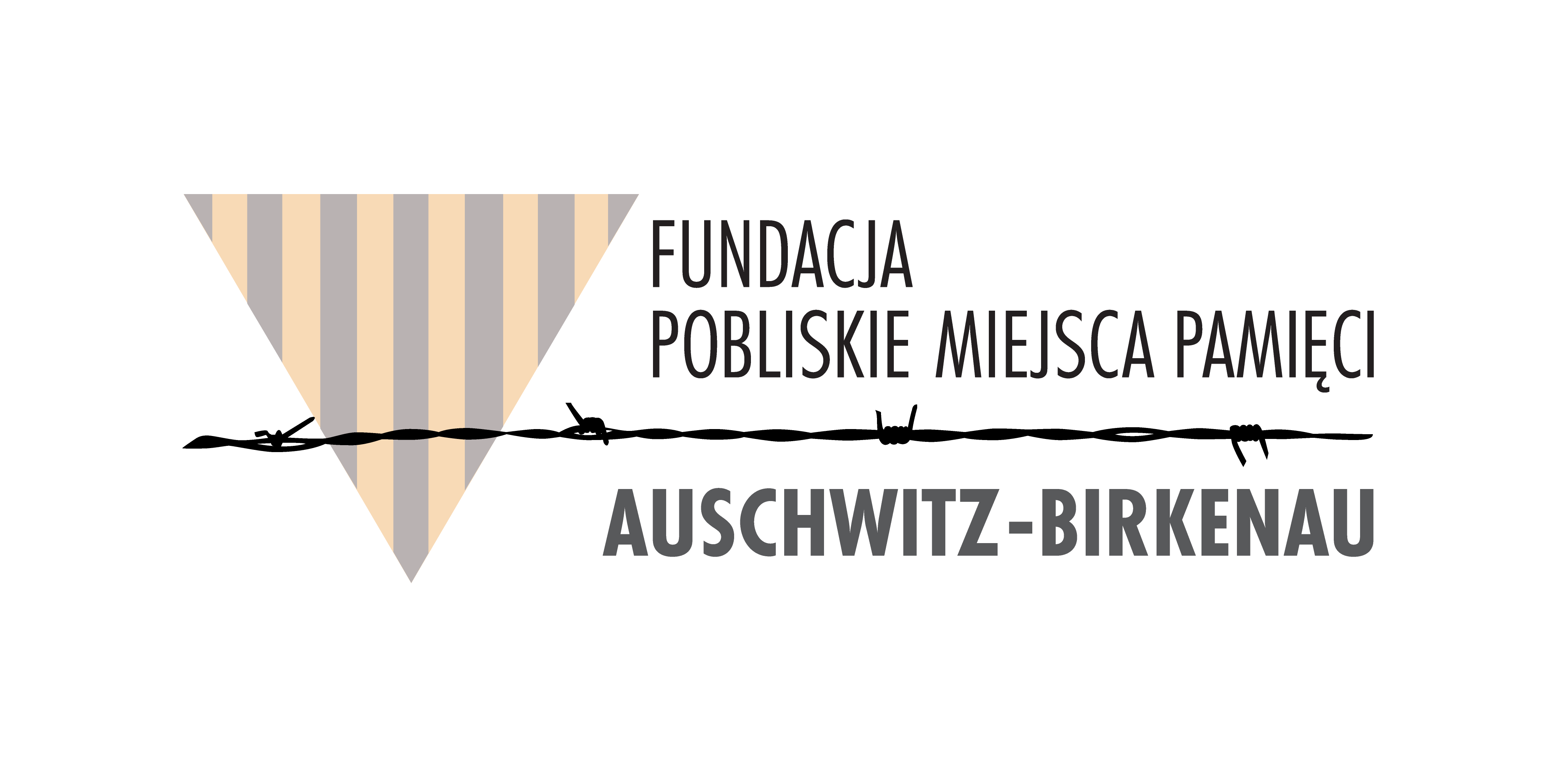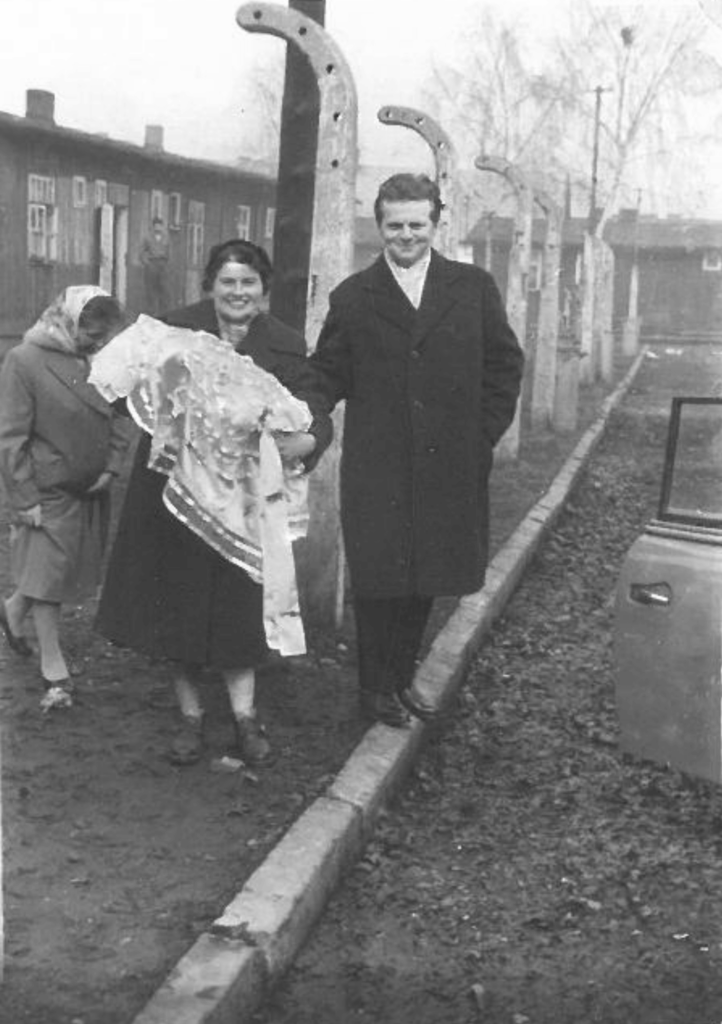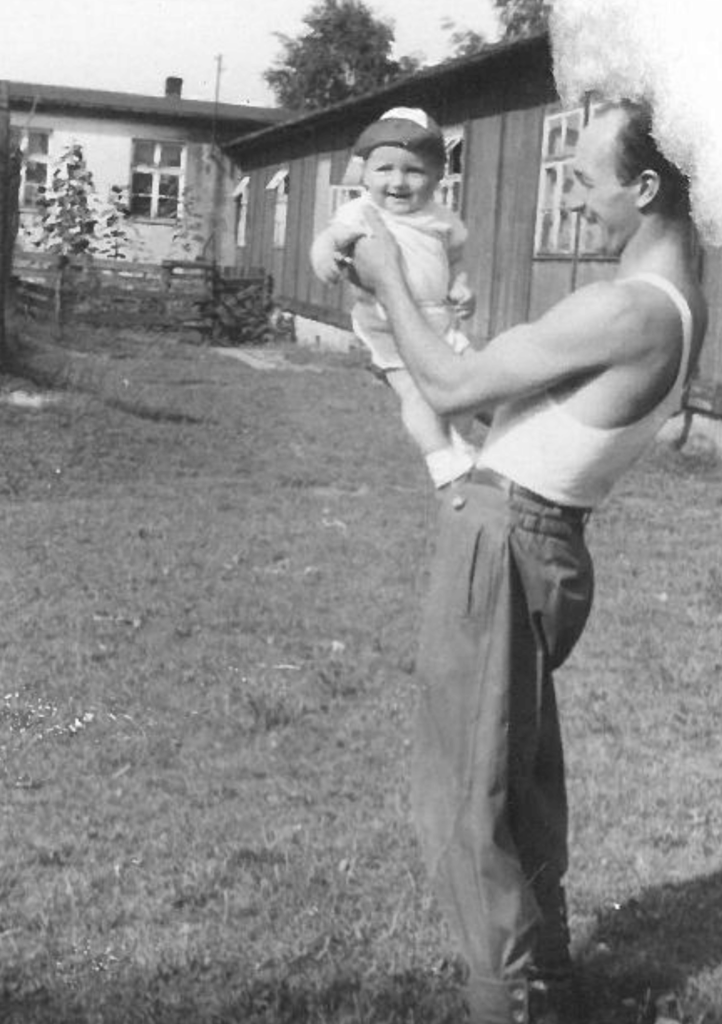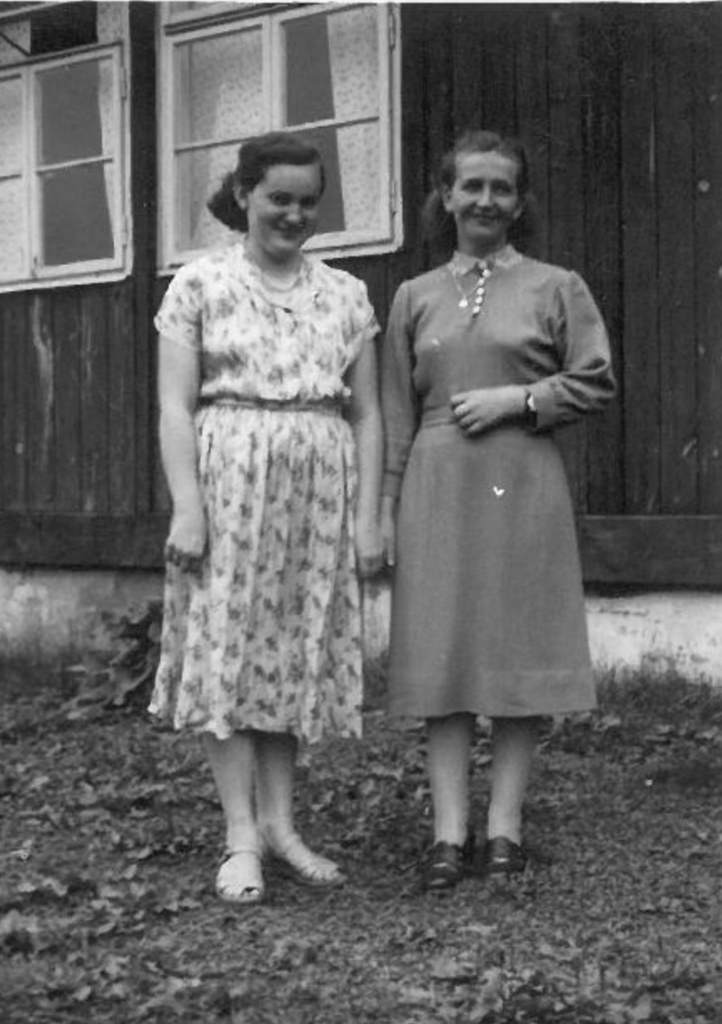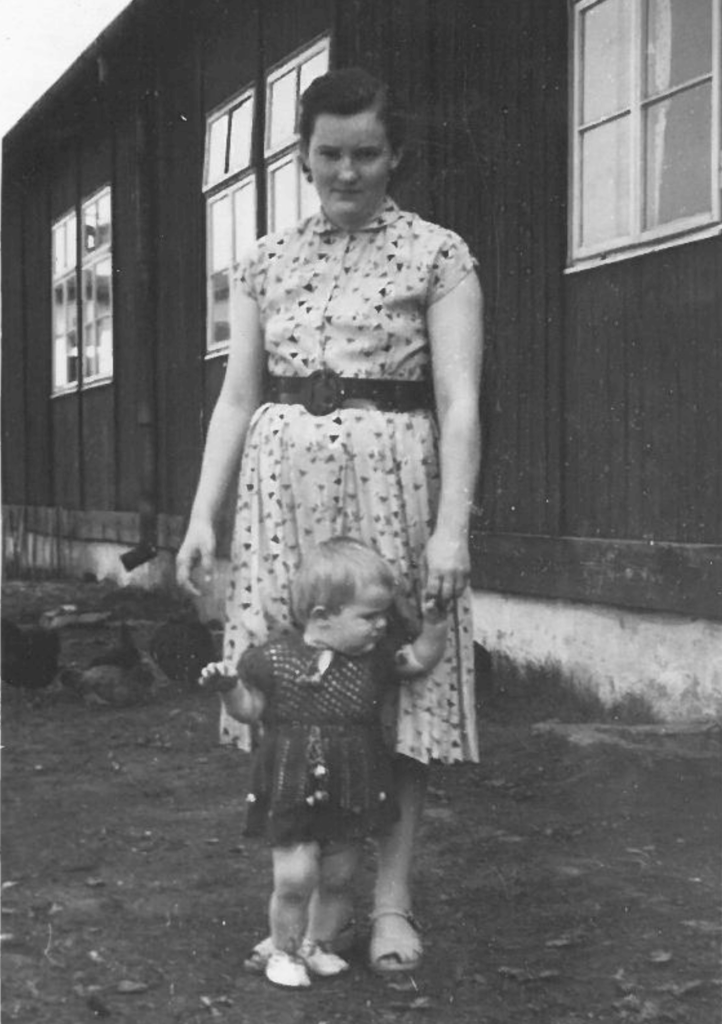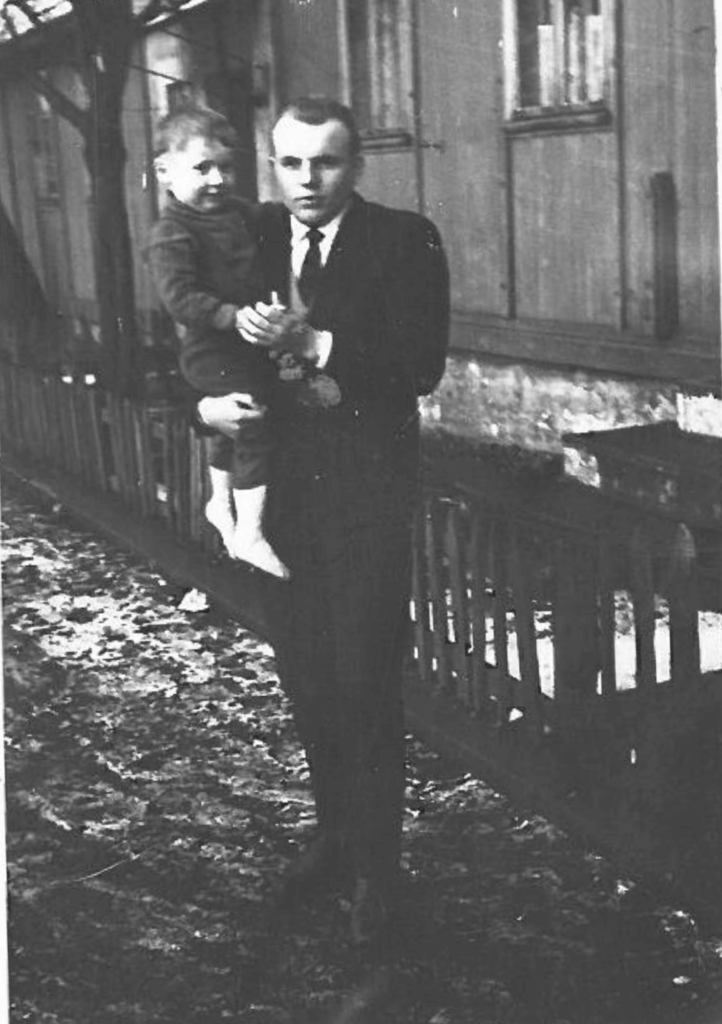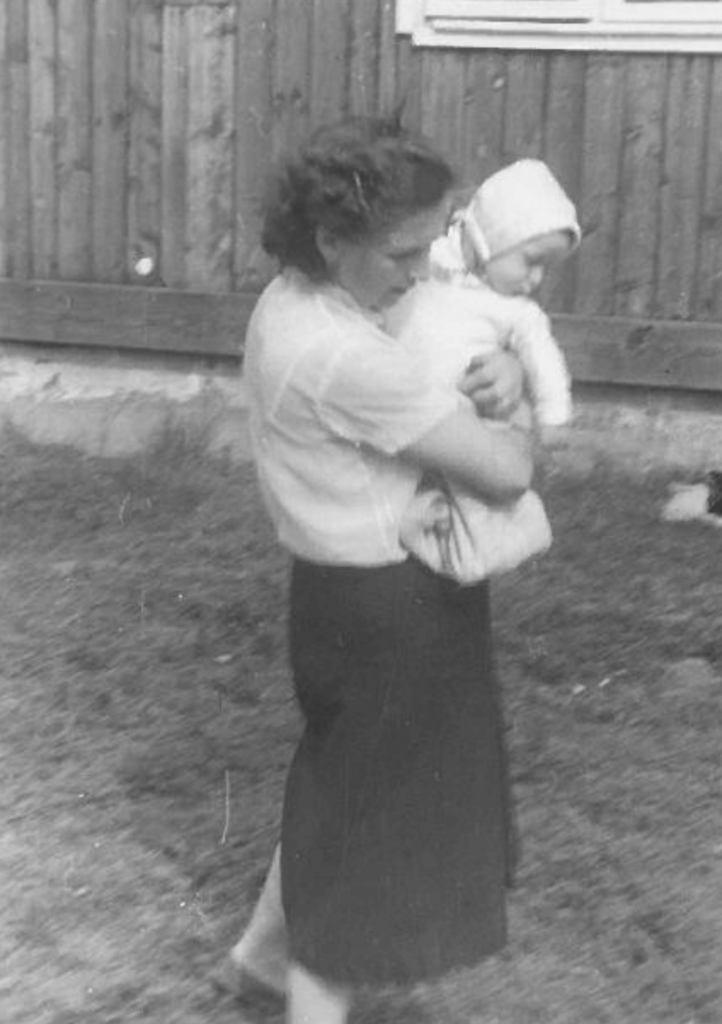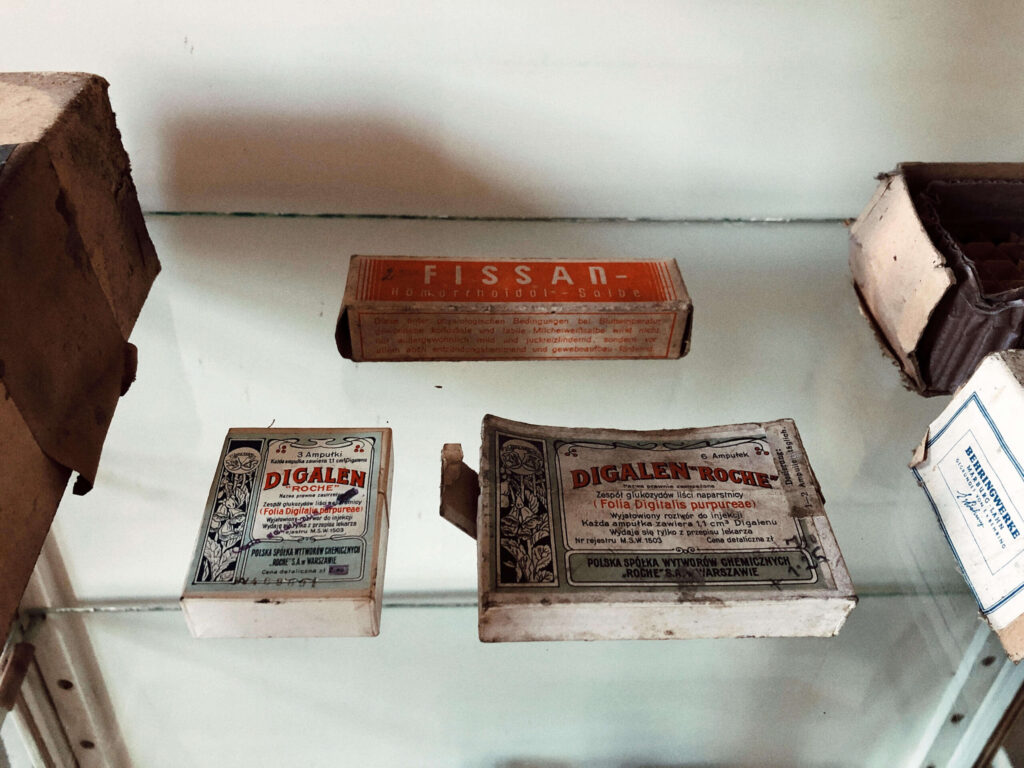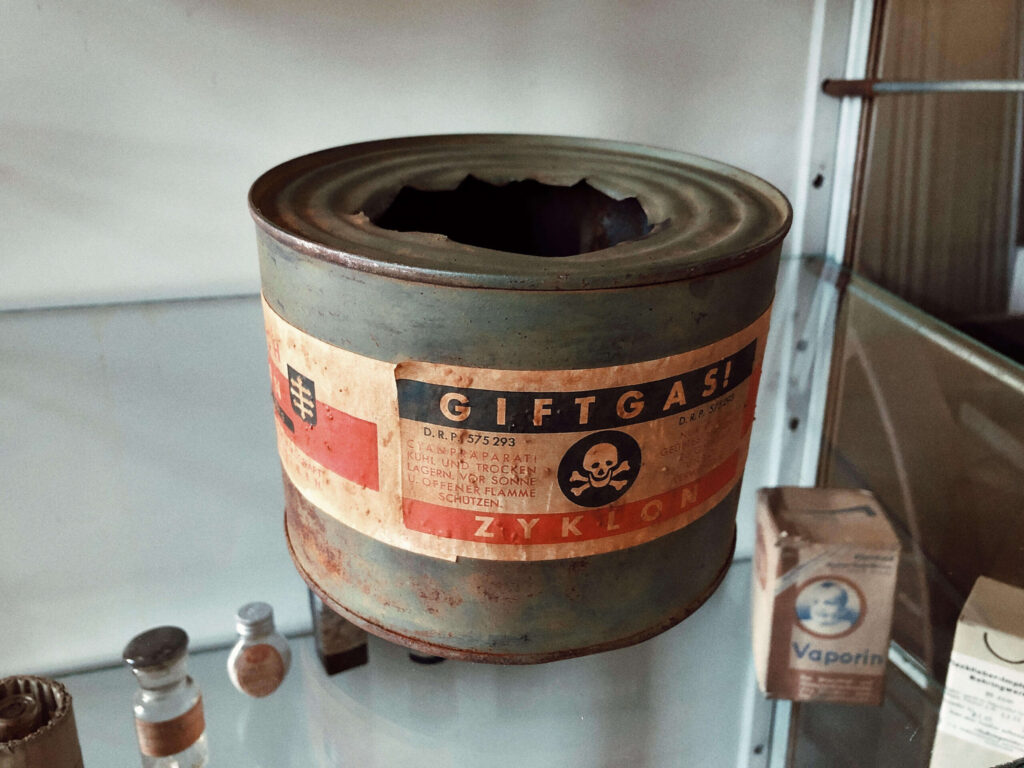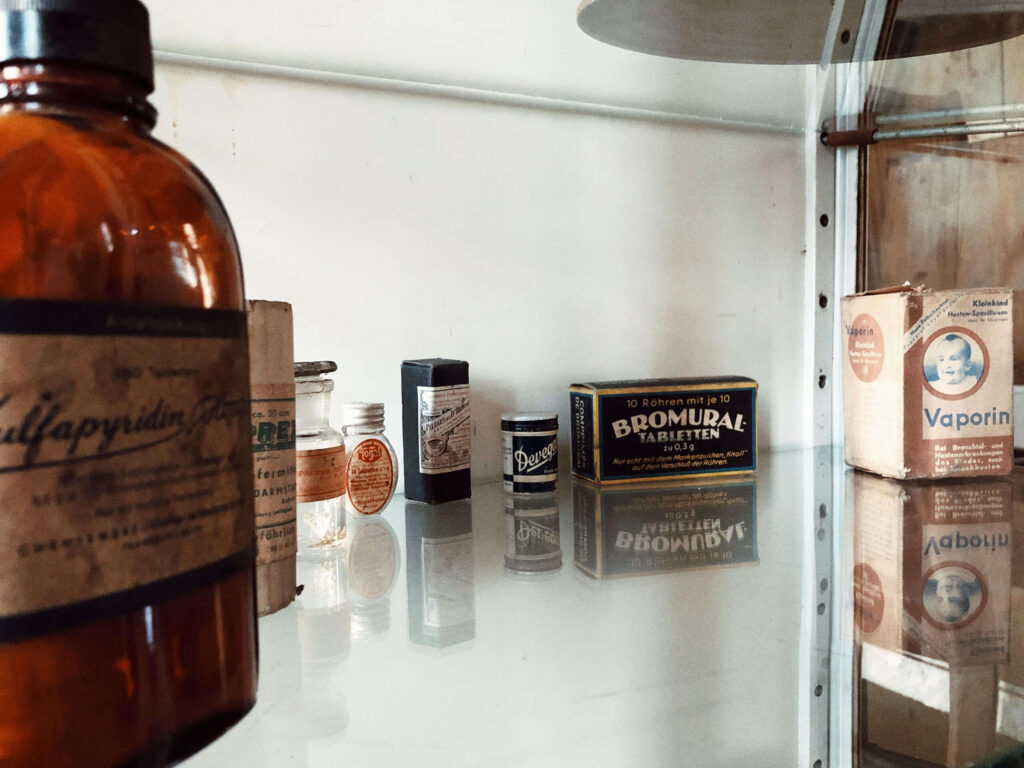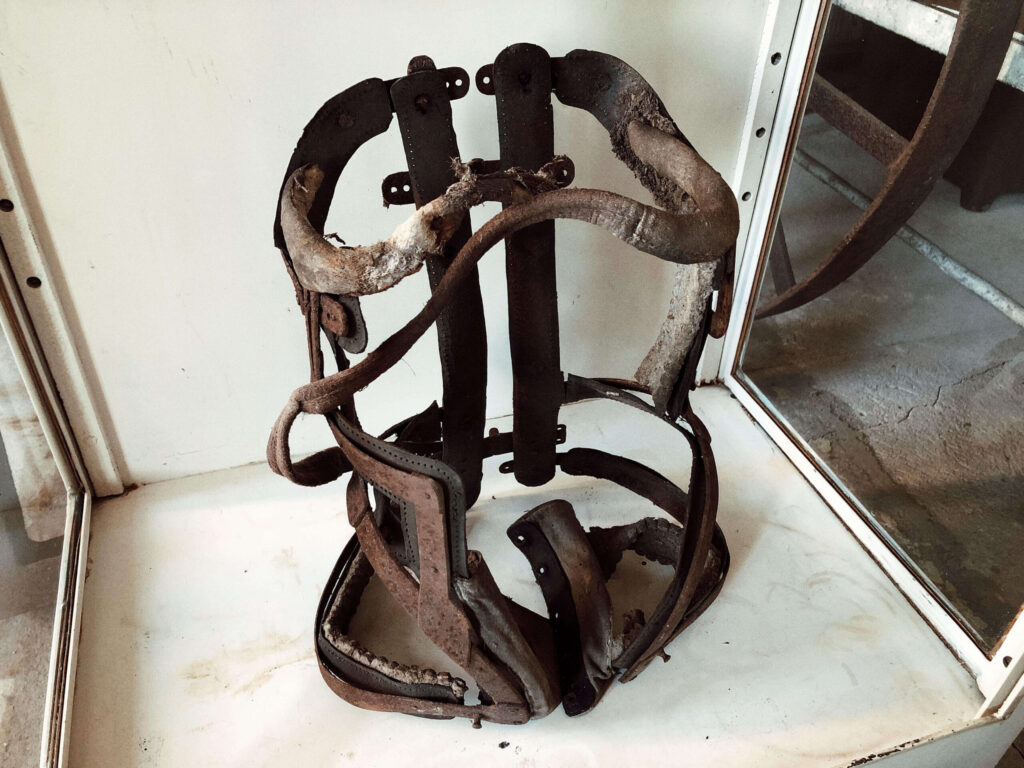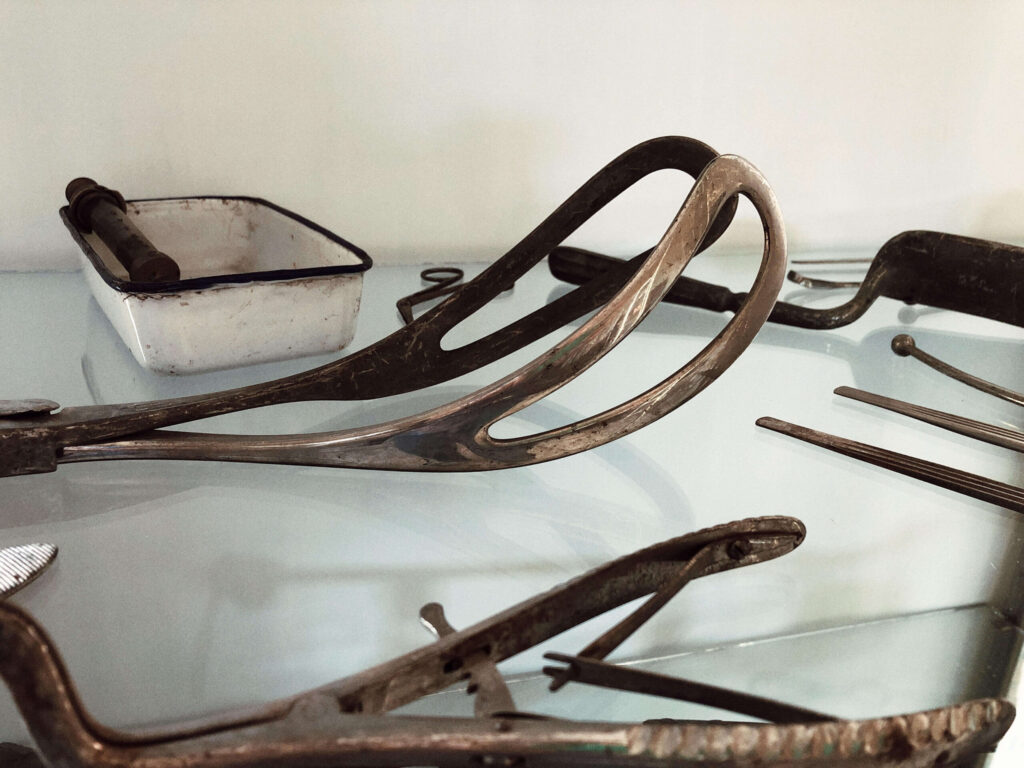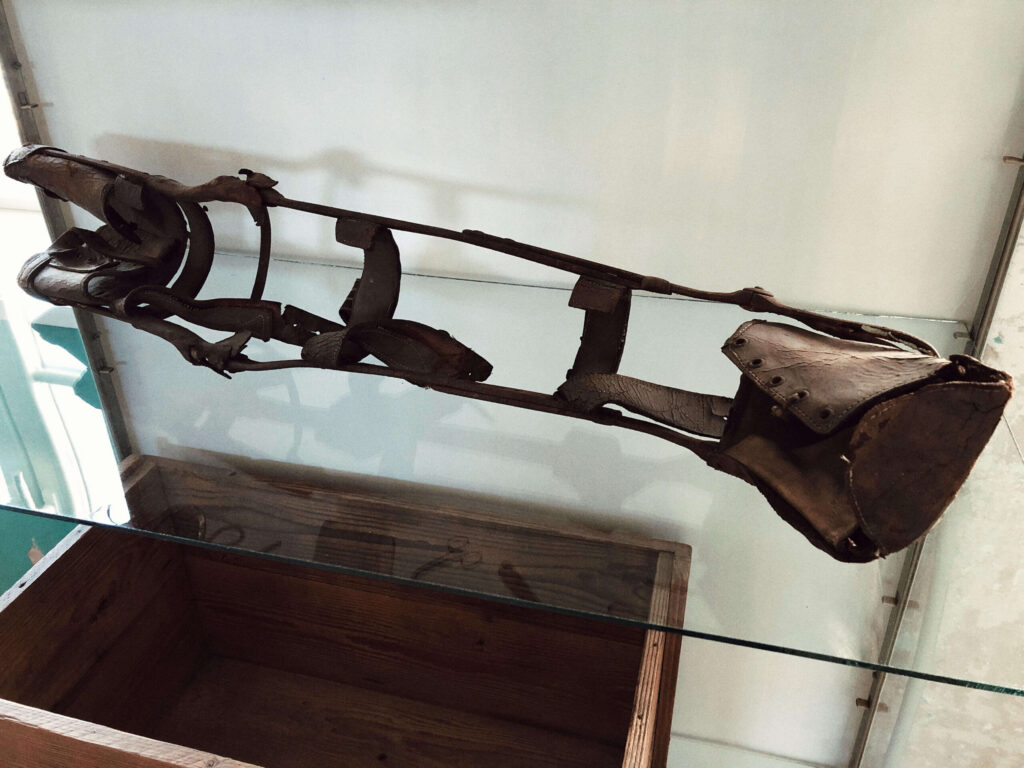exhibition "Anatomy of Suffering at Auschwitz"
After the liberation of the Auschwitz complex, life gradually returned to the area, consuming most of the post-camp remnants...
Genesis
In 1941–1942, the German SS camp authorities at Auschwitz began expanding the Auschwitz concentration camp, transforming it into a vast camp complex. As part of this effort, several nearby villages were displaced. The displaced residents were allowed to take only 25 kilograms of hand luggage per person, while their entire property, homes, farms, and land were seized by the SS camp authorities. Most of the buildings, including farm structures, were dismantled. By January 1945, the camp area had expanded to nearly 50 square kilometers.
After the liberation, people returning to their land found empty spaces where their former homes had been, replaced by barracks, guard towers, and barbed wire. In Auschwitz, Birkenau, and the surrounding subcamps, partially intact warehouses filled with looted belongings of those deported from across occupied Europe were found, along with workshops, kitchens, hospitals, and clinics left behind by the SS. Often having nothing to start a new life, people took everything they could from the former camp areas. Some items were given to them as war reparations, while others were sold for food or alcohol by Russian soldiers stationed at the camp.
It is important to remember that the Auschwitz-Birkenau State Museum was established only in 1947, two years after the camp’s liberation in January 1945. As a result, medical supplies, tools, medical equipment, and other items, including those associated with the inhumane pseudo-medical experiments conducted on prisoners, found their way into the hands of local residents.
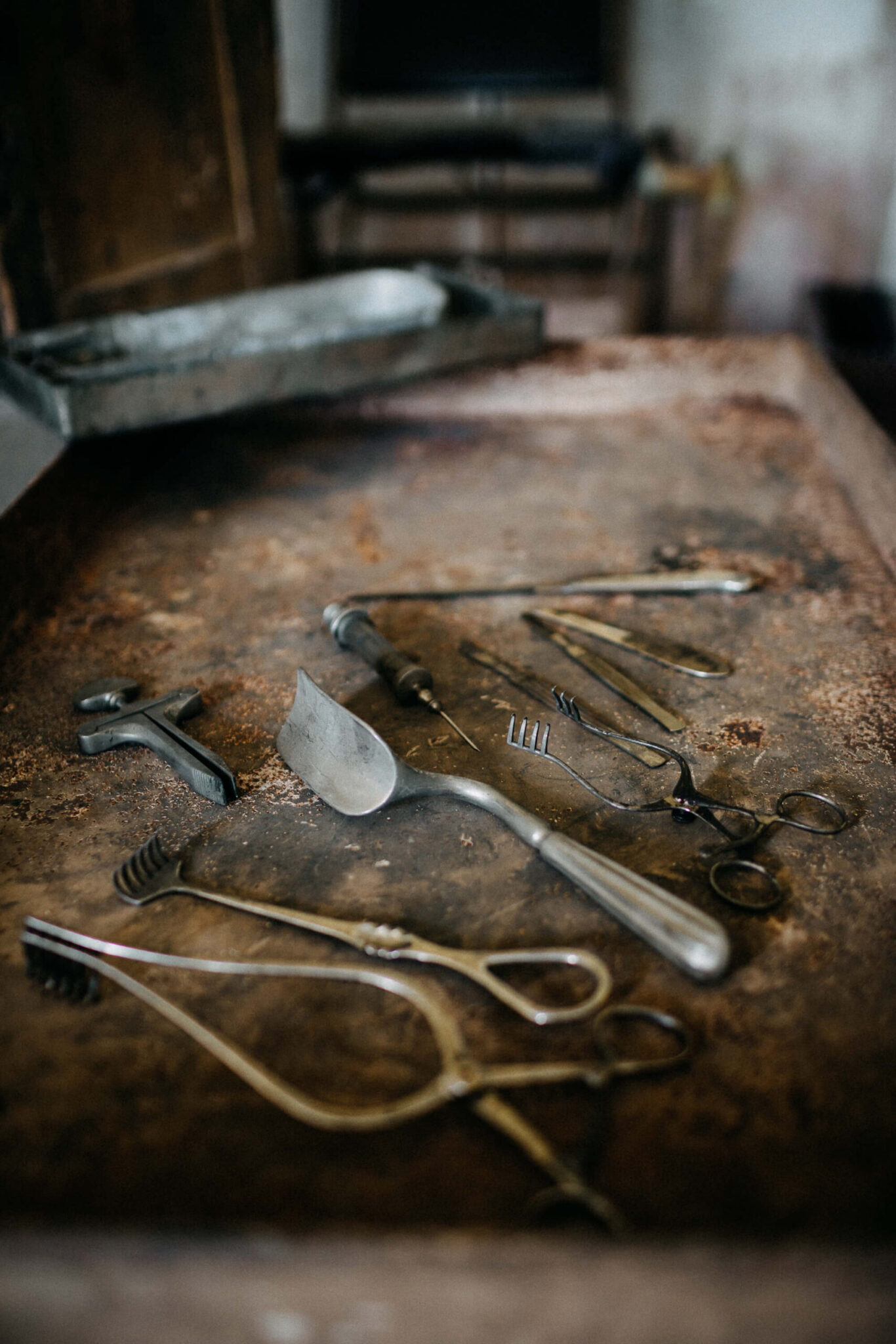
Medical Experiments
Available sources indicate that the medical experiments included, among other things, sterilization, testing the effectiveness and tolerance of new drugs on prisoners, studies on the effects of starvation on the human body, and experiments on twins and individuals with congenital anomalies. For many prisoners, these experiments meant a death sentence. To cover up their criminal actions, SS doctors often ordered the killing of their victims by administering phenol injections or sending them to the gas chambers.
Our Activities
For 20 years, we have been working in the field, acquiring post-camp remnants from the local population, attics, barns, sheds, and garages. Our collection, currently managed by the Auschwitz-Birkenau Nearby Memorial Sites Foundation, established in 2013, consists of several thousand original items directly related to the KL Auschwitz-Birkenau camp complex. The collection includes small items, such as buttons from prisoner uniforms, as well as concrete posts from the camp’s electric fence and entire original wooden barracks used by prisoners and camp facilities. These items originate from prisoners, “Canada” warehouses filled with looted belongings, the SS camp staff, and the camp’s social infrastructure, including kitchens, hospitals, laboratories, workshops, baths, and latrines.
One of the most significant medical-related finds includes several dozen kilograms of various medical tools, including a gynecological chair and numerous medicines. These tools come from many countries across occupied Europe and cover medical fields such as gynecology, surgery, laryngology, radiology, and dentistry. Like the tools, the medicines also originate from various pharmaceutical companies across Europe. They were used to treat diseases such as typhus, tuberculosis, and various internal and pediatric illnesses. In August 2010, we donated part of these finds to the Auschwitz-Birkenau State Museum, which has since taken patronage over our activities.
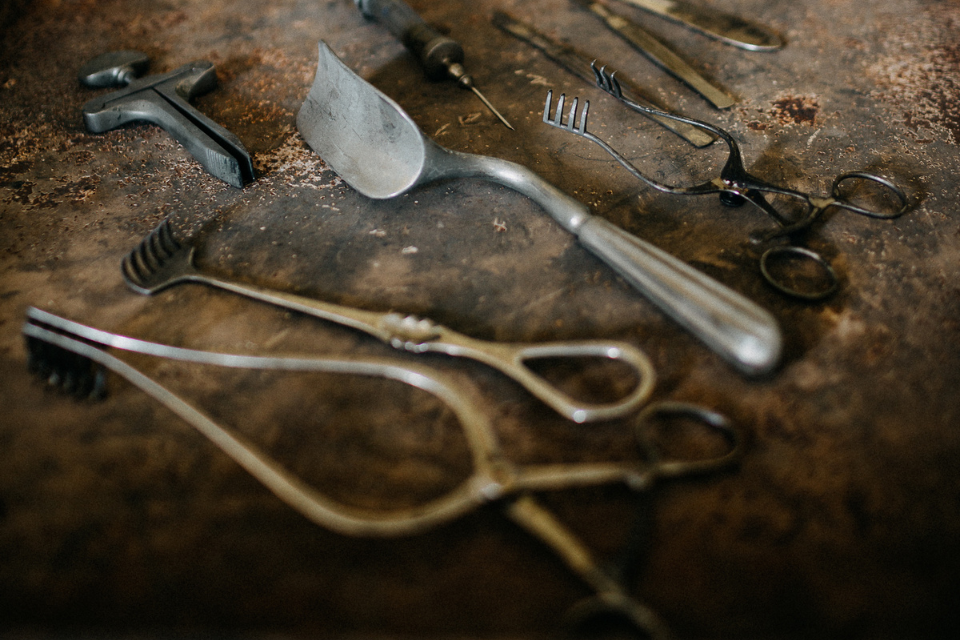
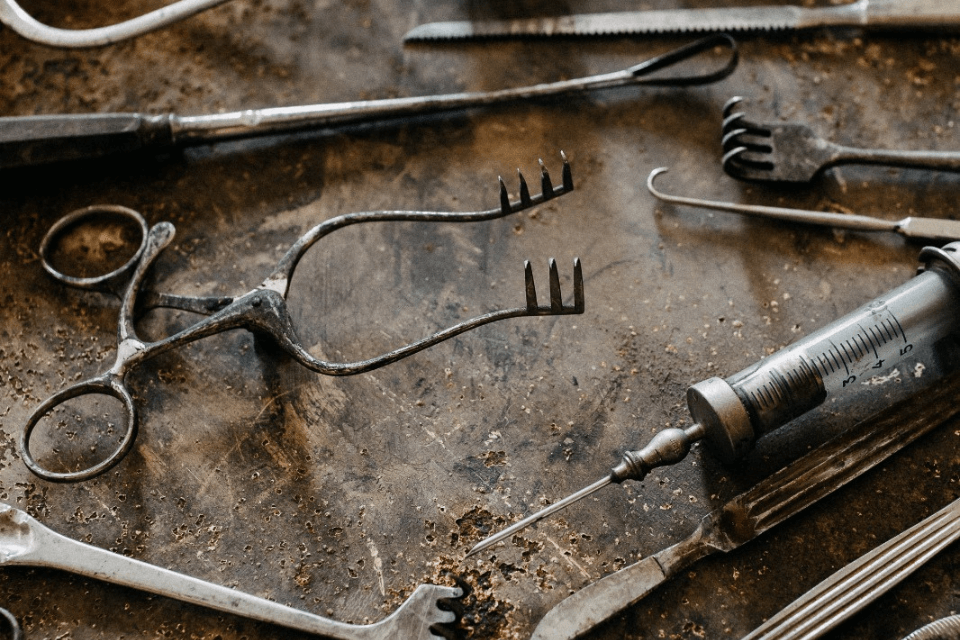
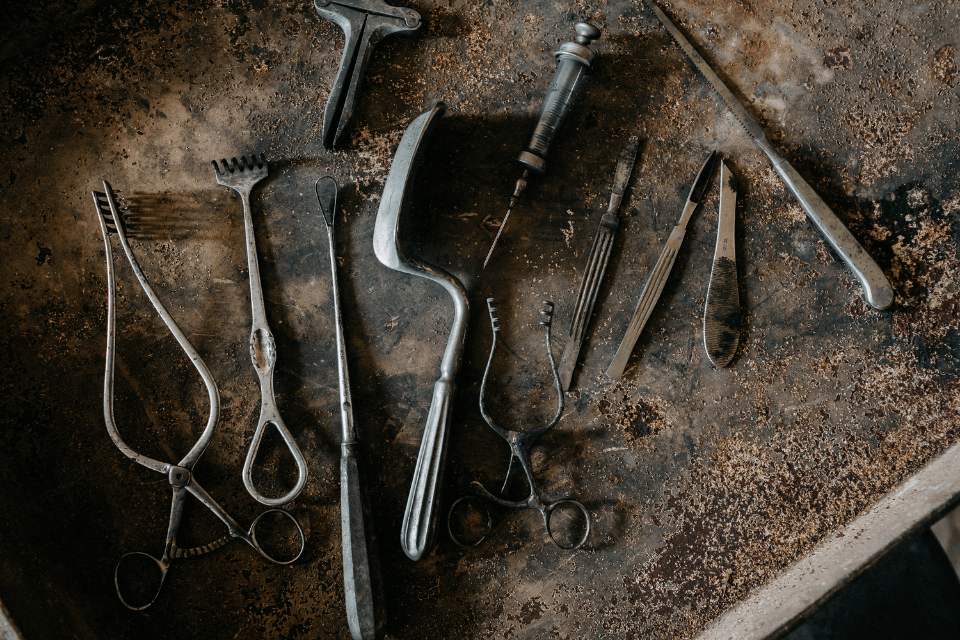
The Exhibition You Are Viewing
Our exhibition, presented at the international Medical Review Auschwitz conference, features two medical cabinets showcasing items from our collection, taken by the local population from the KL Auschwitz-Birkenau complex. In the smaller display case, the upper shelves contain various medicines from pharmaceutical companies across Europe. On the middle shelf, there is an original 500-gram metal can of diatomaceous earth containing Zyklon B gas, produced by Degesch. The bottom shelf holds a medical corset for a young child, likely associated with polio (Heine-Medin disease), which is a particularly painful testament, as children with disabilities were immediately sent to the gas chambers.
In the larger display case, the upper shelves feature original medical instruments made by companies from all over Europe, while the middle shelf contains a metal orthopedic leg brace. On the bottom shelf is a large wooden crate with the BAYER logo, which was most likely used to transport medications. BAYER conducted forced medical experiments on prisoners, resulting in the deaths of countless victims.
What You Can Do?
Our collection of post-camp medical tools, medicines, and other medical-related items remains unprocessed and uncatalogued, and its preservation requires specialized resources for which we are continuously raising funds. Most of the items are unidentified, and many medicines lack specified applications. You can support our work financially, through expertise, or by collaborating with universities, hospitals, and clinics. Our goal is to preserve these objects, which often serve as the only witnesses to the atrocities and pseudo-medical experiments conducted on the prisoners of KL Auschwitz.
Since the beginning of our work, we have been striving to gather as many original items from the vicinity of the camp as possible and make them accessible to people worldwide, so the memory of the victims of KL Auschwitz is never forgotten. Our mission has been ongoing for 20 years, and you too can help us continue it.
Support Heritage – Create the Future
Support the Foundation
Your financial support is a drop that creates waves of change. Thanks to your generosity, we can continue our work by protecting important historical sites, conducting research, organizing educational events, and engaging the local community.
By clicking ‘Donate,’ you will be redirected to the PayPal page, where you can quickly make a donation to support the Foundation. You can also transfer funds directly to our bank account (details in the footer).
